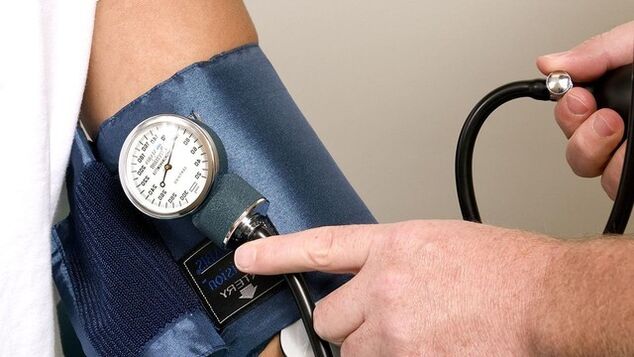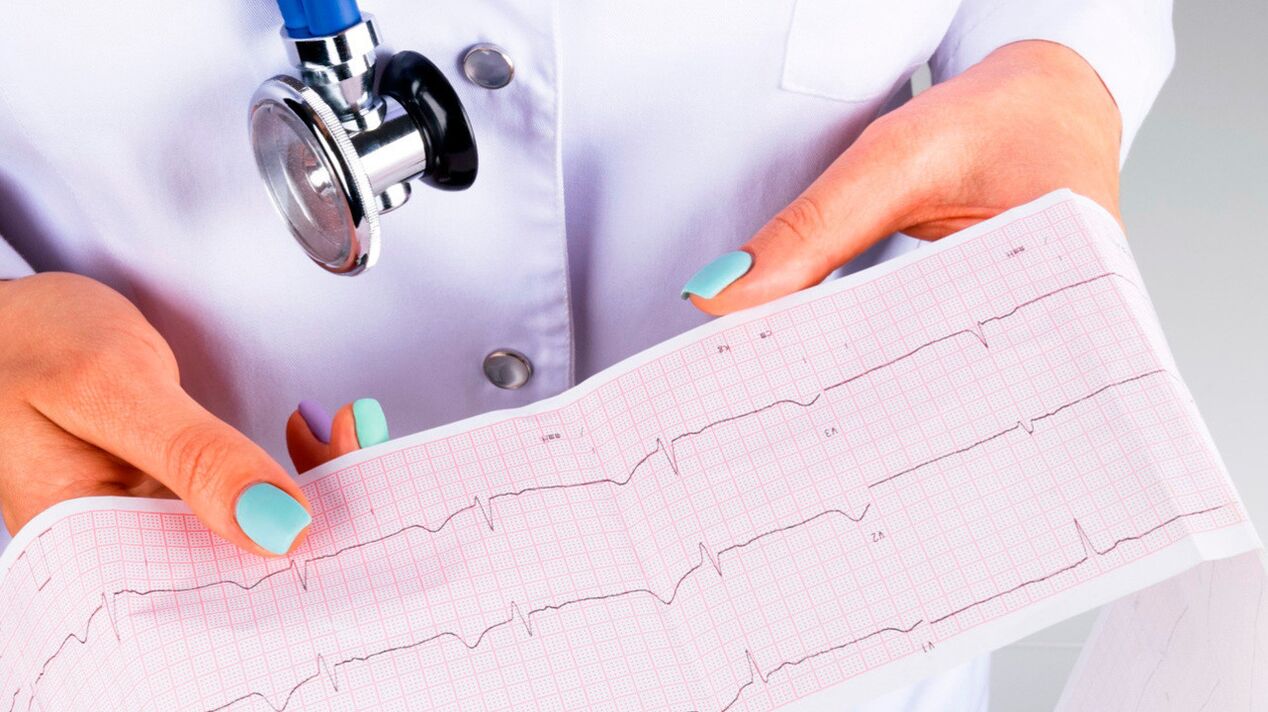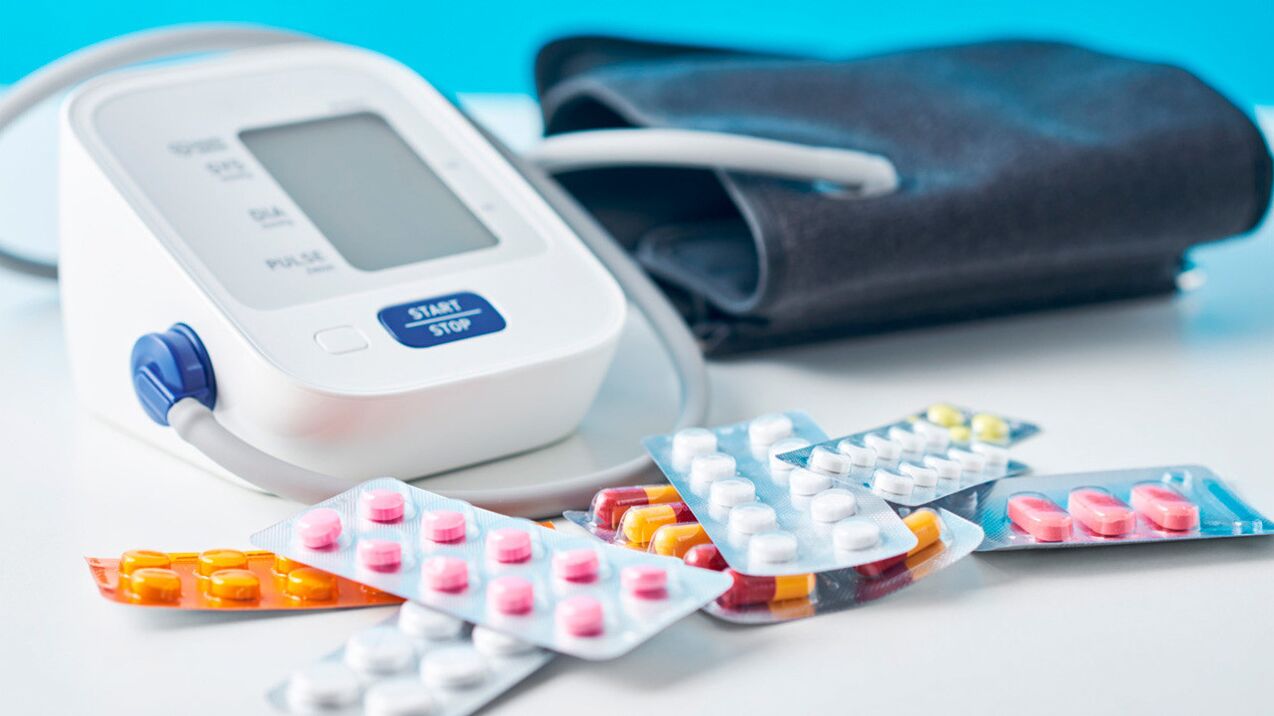
Hypertension is one of the most common cardiovascular diseases. According to the WHO, more than 1. 1 billion people suffer from it. all over the world. High blood pressure increases the risk of developing other heart diseases. Hypertension is among the leading causes of death and the disease is rapidly becoming younger. It occurs not only in older people, but also in young people. Below you will find out why it appears, how to recognize it and control it.
What is hypertension?
This is a chronic condition in which blood pressure is high. It is indicated as two numbers and the optimal value is 120/80 mmHg. Art. The first number is systolic pressure, which occurs when blood is ejected from the heart's left ventricle into the aorta at the time of systole (contraction of the heart's ventricles). The second number indicates the diastolic pressure when the heart muscle is relaxed. Blood pressure increases during physical activity and emotional arousal, but its value should be close to normal at rest. If, with multiple measurements taken at different times, the systolic blood pressure exceeds 139 mmHg. Art. and/or diastolic blood pressure exceeds 90 mmHg. Art. , diagnosed with hypertension.
A persistent increase in blood pressure is associated with several factors, including excess weight and lack of physical activity, poor nutrition, bad habits and high levels of stress.
Causes and risk factors
Hypertension can be primary or secondary:
- primary (essential)hypertension is more common - according to various estimates, in 85-95% of cases. Its appearance is not associated with concomitant diseases; pressure increases under the influence of a complex of factors;
- secondary (symptomatic)hypertension occurs in 5-15%. In this case, hypertension is one of the symptoms that can be associated with endocrine disorders, kidney disease and anomalies of the large vessels.
When the regulation and maintenance of optimal blood pressure is compromised, primary hypertension occurs. The cause of its occurrence is usually constant nervous overload. When diagnosing, it is important to establish as accurately as possible what causes hypertension, whether it has secondary causes (presence of diseases that cause increased blood pressure).
There are numerous risk factors that increase the chance of developing primary hypertension:
- excess weight (obesity);
- insufficient activity, physical inactivity, lack of physical activity;
- drinking alcohol and smoking;
- stress, constant emotional tension;
- lack of sleep, its low quality, insomnia;
- excessive salt intake;
- inadequately organized sleep and rest arrangements (also due to irregular or too long working hours);
- changes in hormone levels (in women, they may be associated with taking oral contraceptives, with the onset of menopause);
- hereditary factors (in total more than 20 genes have been identified that determine the predisposition to hypertension);
- age over 65 years (the disease can also occur in young people; it is worth periodically monitoring blood pressure after 35 years);
- poor nutrition (lack of fruit and vegetables in the diet, excess of foods rich in trans fats and saturated fats);
- kidney disease, diabetes mellitus and some other related conditions and diseases.
Many of these factors are interconnected and mutually reinforcing. Some of them can be controlled (e. g. diet and nutrition, sleep, physical activity, weight, alcohol consumption, smoking). This is an easy way to reduce your risk of hypertension or improve your well-being if your blood pressure is already high.
Classification
Two approaches are used to classify the disease: grades and stages. The degrees of hypertension differ in the values to which blood pressure rises, the difference between the stages lies in the course of the disease, the number, the severity of concomitant organic lesions.
First degree
Systolic blood pressure: greater than 139 and less than 159 mmHg. Art. , and the diastolic is at the level of 90-99 mm Hg. Art. With high values, blood pressure can be normalized by changing your lifestyle. To do this, you need to increase physical activity, adapt your diet, abandon bad habits and reduce stress levels.
Second degree
In the second degree the blood pressure values become high and amount to 160-179 mm Hg. Art. for systolic and 100-109 mm Hg. Art. for the diastolic. With such values, the load on the heart increases significantly. The blood supply to the brain deteriorates and this can cause headaches, dizziness and reduced performance. Changes occur in the back of the eye. Sclerosis of the tissues and blood vessels of the kidneys begins, excretory function is impaired, and renal failure may develop. The condition of the blood vessels worsens. For treatment, you need to change your lifestyle and start taking medications.
Third grade
The systolic blood pressure value is greater than 180 mm Hg. Art. , diastolic - above 110 mm Hg. Art. With hypertension, the load on the heart becomes too high and causes irreversible changes. Blood pressure must be constantly reduced with medications. Without this, there is a risk of acute heart failure, arrhythmia, angina pectoris, myocardial infarction and other serious conditions. Patients with stage 3 hypertension must be monitored constantly by a doctor. Continuous use of drugs that lower blood pressure is necessary.
| Blood pressure | Systolic (mmHg) | Diastolic (mmHg) |
|---|---|---|
| Well | <130 | <85 |
| Normally, the so-calledprehypertension | 130–139 | 85–89 |
| 1 - mild hypertension | 140–159 | 90–99 |
| 2 - moderate degree of hypertension | 160–179 | 100–109 |
| 3 - severe hypertension | ≥ 180 | ≥ 110 |
Stages of hypertension
The disease develops gradually. There are three phases in total.
- First stage:moderate hypertension. Blood pressure is unstable and may vary throughout the day. At this stage, the condition of the internal organs and central nervous system remains normal, there are no signs of organic damage. Hypertensive crises occur rarely and are relatively mild.
- Second phase:severe hypertension. In the second phase, a significant increase in blood pressure is observed, health often worsens, and hypertensive crises become severe. At this stage, changes begin in the internal organs due to constantly high blood pressure. Vascular disorders appear and the blood supply to the brain deteriorates. The retinal arteries narrow. Hypertrophy of the left ventricle of the heart develops and this increases the risk of serious heart disease. Signs of kidney dysfunction appear (increased levels of albumin in the urine, increased levels of creatinine in the blood serum)
- Third phase:very severe hypertension. Blood pressure becomes critically high: above 200 mm Hg. Art. for systolic and 125 mm Hg. Art. for the diastolic. Organic lesions intensify, heart failure, thrombosis of cerebral vessels, aneurysms, renal failure and other serious conditions develop. Severe hypertensive crises often occur.
Symptoms
Even with a significant increase in blood pressure, hypertension may not present symptoms for a long time. For this reason it is advisable to periodically measure blood pressure (monitoring is especially important for those over 35 years old). You can measure blood pressure with an automatic electronic tonometer - such devices are sold in pharmacies.
The main symptoms of hypertension include headache, dizziness and heaviness in the head. These manifestations are associated with vasospasm and deterioration of blood supply to the brain. Possible nosebleeds, ringing in the ears, decreased vision, cardiac arrhythmias. In severe cases of hypertension, weakness, chest pain, nausea, vomiting, and tremors ("shaky" muscles) may appear. Other symptoms include blurry or black spots before the eyes, trouble sleeping, palpitations and tinnitus.
As the disease progresses, visual acuity gradually decreases, sensitivity in the arms or legs may decrease, and in severe cases, paralysis is possible. During periods of stress, against the background of nervous tension or physical activity, symptoms may increase. They most often appear in middle-aged and elderly people. The disease is more serious if you are overweight, have bad habits, have a tendency to overeat or have a high level of stress.
You should see a therapist or cardiologist if you regularly suffer from headaches, dizziness, or vision problems, or if your blood pressure is often elevated when you measure your blood pressure yourself.
Diagnostics
Typically, the diagnosis is carried out in three directions:
- blood pressure measurement.Performed at intervals of a few hours or over 2-3 days to determine the degree of hypertension and its stage;
- identify the causes of the disease.It is important to determine whether hypertension is primary or secondary (caused by other diseases). In the second case, specific treatment may be necessary;
- general health monitoring.During the examination, the condition of the heart, cerebral vessels, fundus and kidneys are monitored. Due to high blood pressure, the functioning of these organs is impaired. During diagnosis, it is important to evaluate their condition.
At the first appointment, the doctor will carry out a survey and collect details of your medical history regarding the disease. Information will be needed on how long the patient has been suffering from hypertension, what the blood pressure level is, whether there are symptoms of heart disease, apnea, severe snoring, whether the person or his close relatives have had a stroke, peripheral arterial disease, gout , diabetes, kidney disease. The doctor will certainly ask questions about lifestyle: physical activity, bad habits, diet, taking medications.
The following tests are performed for patients with arterial hypertension:
- blood pressure measurement.It is measured several times at rest (physical activity, caffeine consumption, smoking half an hour before measurement are excluded), measurements are taken at different times of the day;
- general exam:measure height and weight, waist circumference, palpate the abdomen, evaluate the pulsation of the peripheral arteries;
- Urine analysis.Albumin and creatinine levels are important: deviations from the norm indicate renal dysfunction and require ultrasound;
- blood analysisTo monitor the levels of potassium, creatinine, lipids, ultrasound of the kidneys is prescribed. The evaluation of lipid levels is necessary to control lipid metabolism and eliminate the risk of complications affecting the cardiovascular system;
- ECGperformed when left ventricular hypertrophy is detected to monitor the condition of the heart.

In addition, the doctor may subject the patient to a cardiac or neurological examination or an examination of the respiratory system.
Treatment of hypertension
High blood pressure is a disease that cannot be completely cured, but it can be controlled. Therapy and lifestyle changes can stop the development of hypertension, reduce the frequency and severity of attacks, and eliminate symptoms. But the most important thing is to reduce risks to the cardiovascular system, brain and kidneys.
Treatment begins with lifestyle adjustments:
- stop smoking;
- refusal to drink alcohol or significantly limiting the amount of alcohol;
- diet: the diet is adapted, salt intake is reduced (less than 3. 75 g per day), the amount of fruit and vegetables is increased (the ideal would be 5 servings per day), whole grains, dairy products, low in fat and calorie intake is limited. If there are no contraindications or kidney disease, increase the consumption of foods containing potassium (spinach, beans, pumpkin, fish, milk, kefir, yogurt and others);
- increase in physical activity. Moderate exercise is recommended to aid weight loss and strengthen the cardiovascular system.
During treatment, blood pressure is reduced to target values (below 130/80 mmHg) to reduce the risk of complications. With such a decrease, constant monitoring by a doctor is necessary. A tonometer used for home measurements needs to be calibrated regularly. For patients with diabetes, pregnant women, the elderly and debilitated people, the use of antihypertensive drugs requires special caution.
The following can be used to treat hypertension:
- adrenergic modifiers.They reduce the activity of the sympathetic nervous system and lower blood pressure, but can cause drowsiness and lethargy, and are therefore rarely used;
- ACE inhibitors.Reduce peripheral vascular resistance, often prescribed to patients with diabetes;
- angiotensin II receptor blockers.They have a similar effect to ACE inhibitors and are therefore not prescribed together with them. Not prescribed during pregnancy;
- beta blockers.Provide a decrease in blood pressure by slowing the heart rate;
- calcium channel blockers.They reduce total peripheral vascular resistance and can cause reflex tachycardia;
- direct vasodilators.They have a direct effect on blood vessels and are used for severe hypertension;
- diuretics.They reduce blood plasma volume, which reduces blood pressure, but can also cause hyperkalemia.
Important!A therapist or cardiologist should prescribe medications and their dosage after an examination. Taking medications without a prescription can be dangerous.
If your doctor prescribes medications, you will need to undergo periodic checks to evaluate the effectiveness of the treatment and adjust it. It is important to adjust your lifestyle and restore normal health so that a minimum amount of medication is needed to control the course of hypertension.

Possible complications
Due to the increase in blood pressure, the walls of the arteries lose elasticity and the heart muscle works too hard. This increases the risk of angina, acute heart failure and heart attack. Due to the lack of blood supply to the brain, transient ischemic attacks and strokes are possible. The severity of hypertension will increase without treatment and without lifestyle correction: the pressure will continue to increase and this will lead to damage to internal organs and a worsening of overall health and well-being. Smoking, drinking alcohol, overeating, lack of physical activity and high levels of stress accelerate the development of hypertension and make its course more complex.
Consequences
Without treatment, high blood pressure causes serious consequences. Constant spasm of the cerebral vessels leads to ischemia and stroke. They are dangerous with severe disability and even death. When the load on the heart muscle becomes too high, tachycardia, arrhythmia and heart failure occur. Without treatment, myocardial infarction is possible.
The severity of hypertensive crises increases, they become complicated, life-threatening, and may be accompanied by stroke, acute coronary syndrome and other serious conditions. The quality of life against the background of hypertension without adequate therapy and restoration of a normal state of health decreases sharply, up to severe disability.
Forecast
The prognosis is good if the patient consults a doctor in time and takes measures to control blood pressure and factors affecting hypertension. In this case, it is possible to avoid the long-term consequences of hypertension and its serious course. Even with severe arterial hypertension, it is necessary to undergo treatment and adjust your lifestyle.
Prevention
To prevent hypertension, self-monitoring of blood pressure is recommended after the age of 35 or when symptoms of hypertension appear. It is important to eliminate the effects of factors that cause increased blood pressure: control your diet, eliminate smoking and alcohol, reduce stress levels, devote more time to physical activity: in a word, lead a lifestyle healthy life.
Conclusion
Hypertension is a dangerous disease, but it can be controlled by maintaining normal health and reducing the risk of complications. To do this, it is important to monitor blood pressure levels, control weight, lead a healthy lifestyle and undergo preventive examinations with a therapist or cardiologist.























